Gallery of Galaxies
But the Universe is still larger than just our own galaxy. Our Milky Way is but one of many millions of galaxies. Here are some of the many beautiful shapes that galaxies come in. Remember that each of these galaxies is made of many billions of stars and the size of each galaxy is many thousands of light-years across.
DIGITAL EFFECT: Galactic Gallery
Fade on a marker indicating the position of M31, and then scale up a still image of M31 from that position.
VISUAL 15 (still): M31, the Great Galaxy in Andromeda (Spiral)
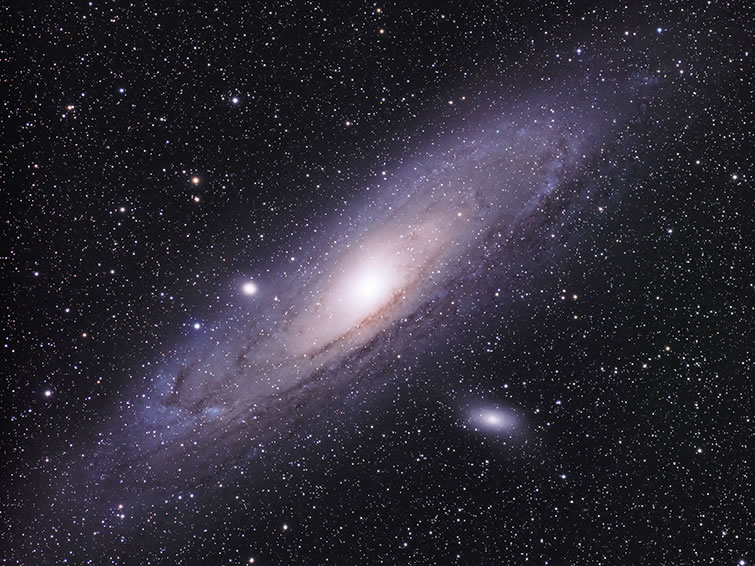
This is one of the closest galaxies to our own Mily Way galaxy. It is about 2 million light-years from us.
DIGITAL EFFECT: Other Galaxies Scale down the still image of M31. Show gallery of galaxies. Fade up still images of seven galaxies (Visuals 16-23), along with captions indicating the type of galaxy for each. Point out different types (spiral, elliptical, irregular, barred spiral). Point out orientation of spirals as seen either top/bottom view or edge-on.
VISUAL 16 (still): M82, Starburst Galaxy in Ursa Major (Irregular), about 11.4 million light-years away.
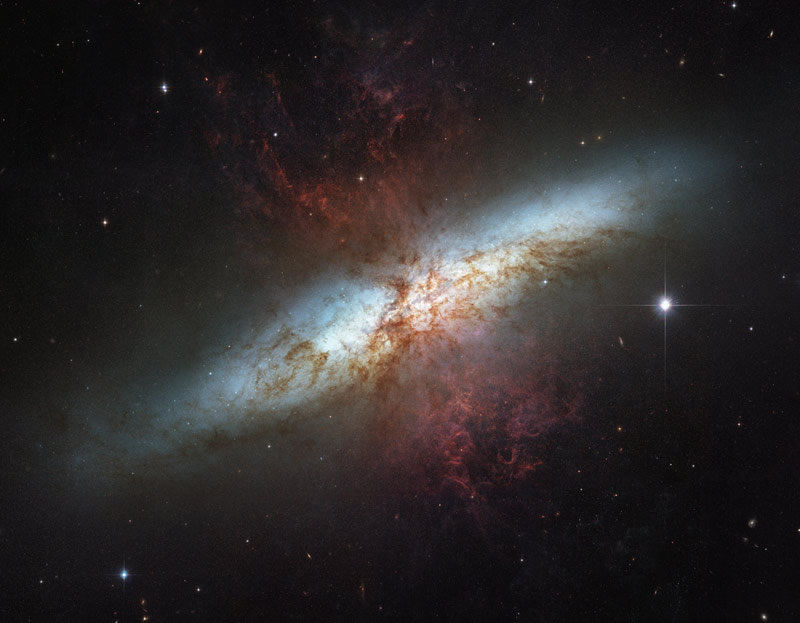
VISUAL 17 (still): NGC 1132, in Aridanus (Elliptical), about 318 million light-years away.

VISUAL 18 (still): NGC 4676, “The Mice” near Coma Berenices (Colliding Galaxies), about 300 million light-years away.
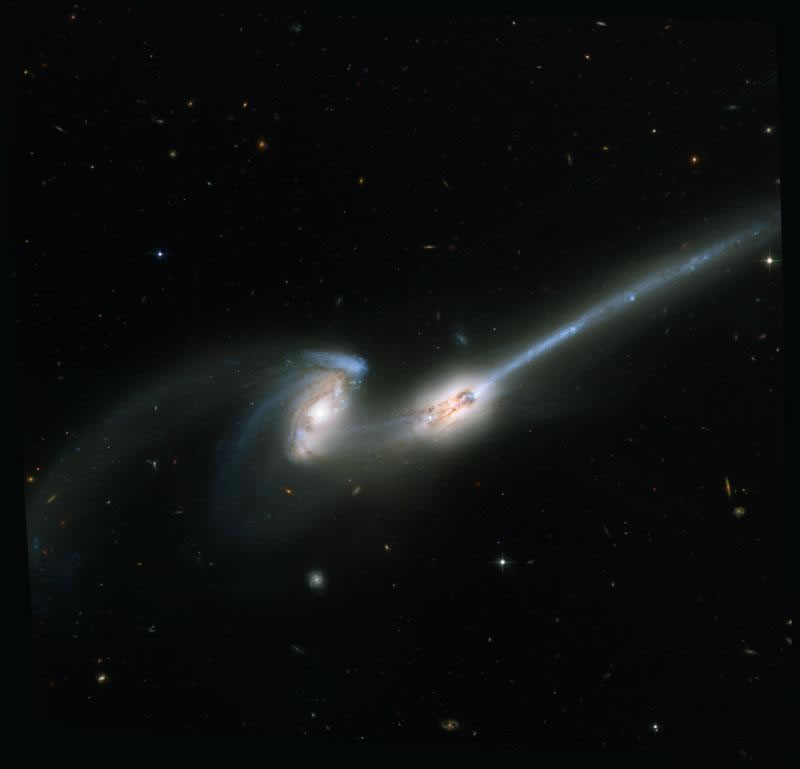
VISUAL 19 (still): M51, Whirlpool galaxy, in Canes Venatici (Spiral, top view), about 23 million light-years away.

VISUAL 20 (still) NGC 1300, in Aridanus (Barred Spiral)
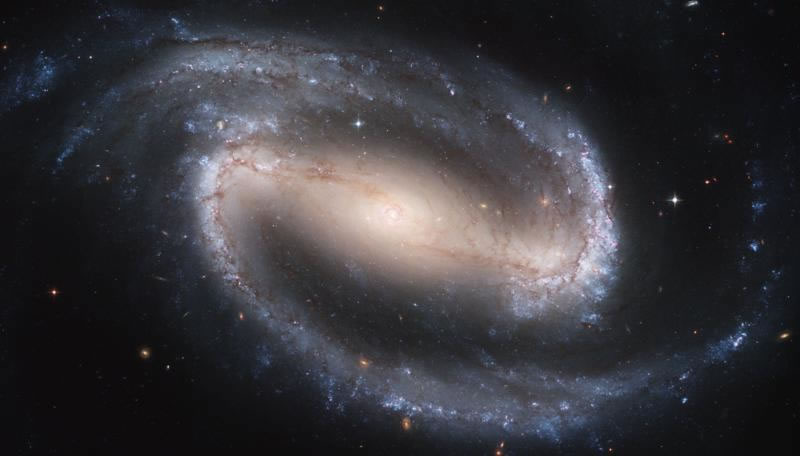
VISUAL 21 (still): NGC 3370, in Leo (Spiral)
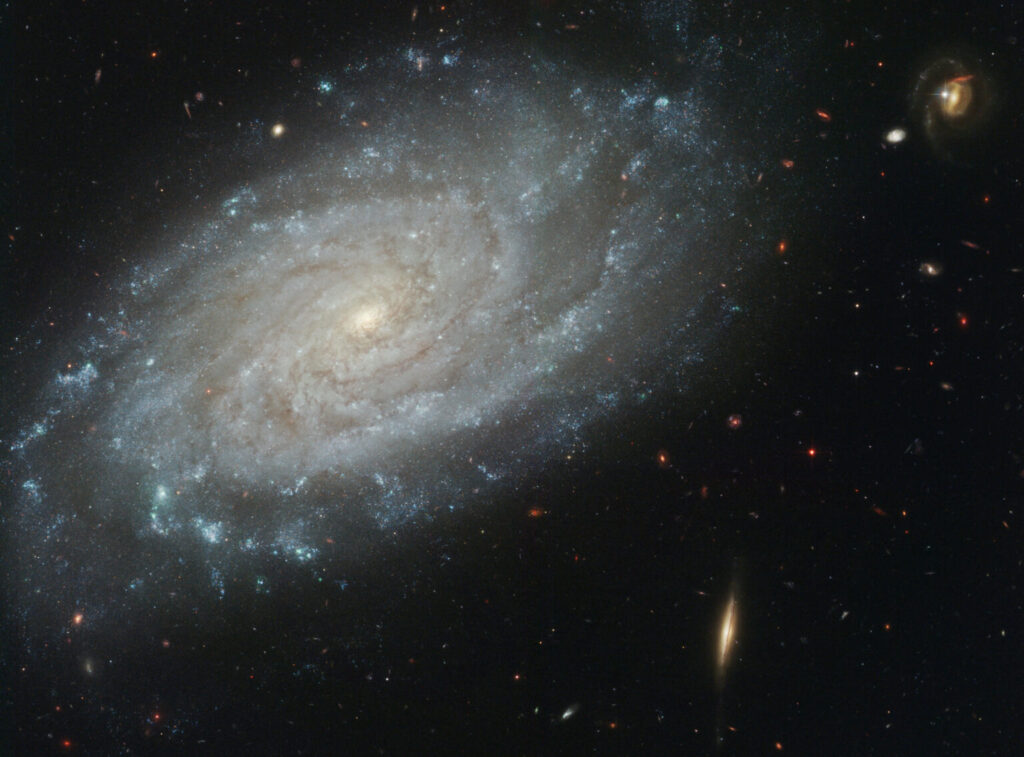
VISUAL 22 (still): NGC 3628, in Leo (Spiral, edge-on), about 35 million light-years away.
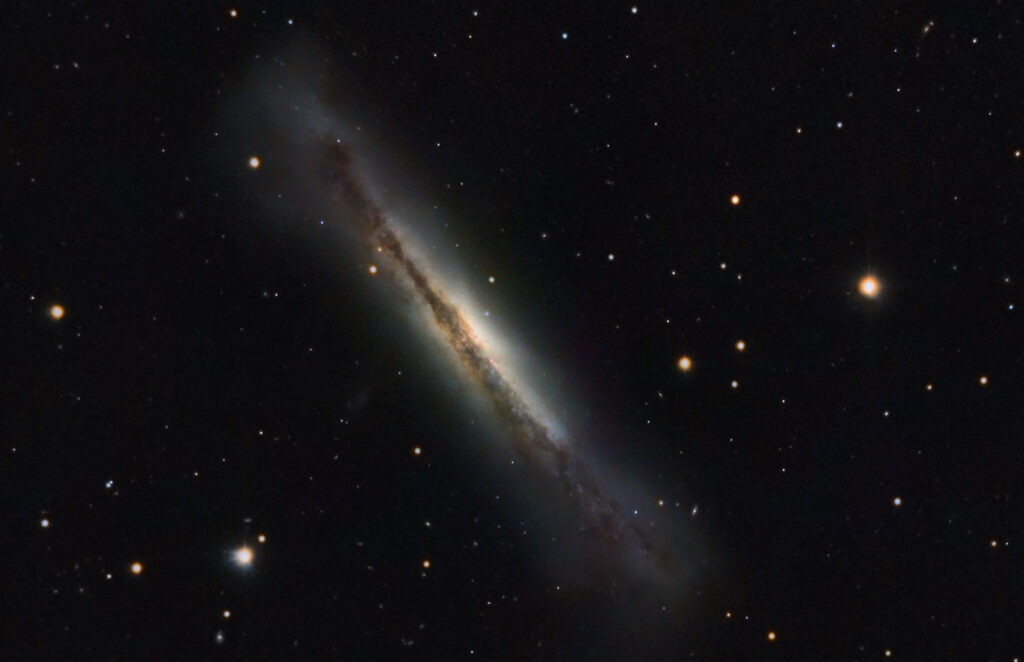
[Fade off all galaxy images and captions.]
VISUAL 23 (still): Galaxy Cluster, Abell 1689
Scale up and rotate a still image of galaxy cluster Abell 1689 from a “blank” spot in the sky. It is about 2.5 billion light-years away.
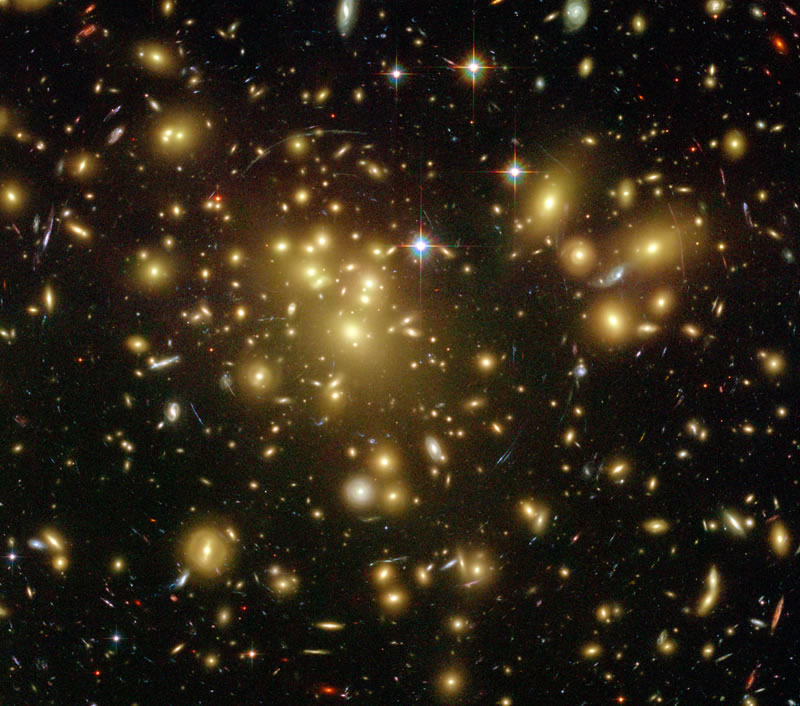
Scale down and fade off the galaxy cluster image.
Distances to nearby galaxies can be found by observing Cepheid variable stars and other types of variable stars in those galaxies.
The Cepheid variables that Henrietta Leavitt studied in making her discovery were all about the same distance away, in a nearby galaxy—the Small Magellanic Cloud—about 160,000 light-years away from us. The Large and Small Magellanic Clouds are nearby in relation to other galaxies, but extremely far away compared to the stars in our immediate neighborhood. To say that all the stars in one of the Magellanic Clouds are roughly the same distance away from us is somewhat like saying that all the people in New York are about the same distance away from San Francisco.
To determine the distances to the most distant galaxies, “the standard light bulb” Cepheid variable stars are of no use, since we cannot see individual stars in galaxies that far away. For great distances we use “standard galaxies.” Studies of Cepheid variables in nearby galaxies have shown that certain types of galaxies have fairly predictable absolute brightnesses. We assume that those same types of galaxies have the same absolute brightness no matter how far away we find them. Then, just as we did with the Cepheid variable technique, we can figure out how far away the galaxy is by measuring its apparent brightness.
One of the most profound discoveries about galaxies is that they are nearly all moving away from us.
What does that tell us about what’s happening to our Universe?
[It’s expanding.]
This was discovered by analyzing the color of light from galaxies. When a galaxy is moving away from us, the color of light that we see from it is shifted towards the red end of the color spectrum. This is similar to what happens to the sound of a noisy car horn when starts moving away from you.
[Optional: play audio of car horn.]
The more the light appears redshifted, the faster the galaxy is moving away from us. It was found that distant galaxies are more redshifted than nearby galaxies. The relationship between the galaxy’s redshift and its speed away from us has turned out to be so reliable, that redshift is even used as one of the techniques for finding distances to the most distant galaxies.
For decades astronomers assumed that galaxies were moving away from one another with a constant average speed, but in 1998, two teams of astronomers found that average speed is increasing. The expansion of the universe is accelerating!

